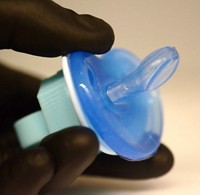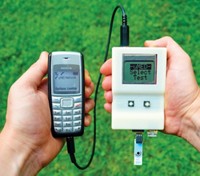Advertisement
Grab your lab coat. Let's get started
Welcome!
Welcome!
Create an account below to get 6 C&EN articles per month, receive newsletters and more - all free.
It seems this is your first time logging in online. Please enter the following information to continue.
As an ACS member you automatically get access to this site. All we need is few more details to create your reading experience.
Not you? Sign in with a different account.
Not you? Sign in with a different account.
ERROR 1
ERROR 1
ERROR 2
ERROR 2
ERROR 2
ERROR 2
ERROR 2
Password and Confirm password must match.
If you have an ACS member number, please enter it here so we can link this account to your membership. (optional)
ERROR 2
ACS values your privacy. By submitting your information, you are gaining access to C&EN and subscribing to our weekly newsletter. We use the information you provide to make your reading experience better, and we will never sell your data to third party members.
Analytical Chemistry
Diagnostics In The Palm Of Your Hand
Electrochemiluminescence: A camera phone quantitatively captures signals
by Rajendrani Mukhopadhyay
January 26, 2011

A sheet of paper and a mobile phone together could create a cheap, portable alternative to typical laboratory-based and expensive diagnostic techniques. Researchers in Australia have created a simple medical device that generates signals based on electrochemiluminescence (ECL) that camera phones can capture (Anal. Chem., DOI: 10.1021/ac102392t).
Colorimetry and electrochemistry are already standard ways to detect molecules in paper devices. But analytical chemist Conor Hogan and colleagues at Australia's LaTrobe and Monash Universities picked ECL, in which an electrochemical potential controls a light-producing chemical reaction. ECL provides the benefit over electrochemistry of high detection sensitivity. Unlike with colorimetry, luminescence detection doesn't depend on the availability of daylight or artificial lighting.
The investigators fabricated the devices by inkjet printing channels onto filter paper and embedding into one end of a channel tris(2,20-bipyridyl)ruthenium(II) (Ru(bpy)32+), which gives off light when it reacts with an oxidant. Hogan and colleagues then laminated the paper to attach it to inexpensive electrodes.
The researchers deposited drops of a solution of nicotinamide adenine dinucleotide (NADH), an oxidizing, bioactive molecule found in all cells, and let it wick up the channels in the paper. When NADH reached the channel end containing Ru(bpy)32+, the molecules reacted to give off a visible signal. Hogan and colleagues detected NADH at just 72 μM, a lower concentration than achievable by paper colorimetry. They also showed that a Samsung smartphone quantitatively captured signals from a different analyte.
Chemical engineer Robert Pelton at McMaster University, in Ontario, says, "This work is a nice example of how you can integrate" ECL and camera phones to photograph and email data from paper devices.




Join the conversation
Contact the reporter
Submit a Letter to the Editor for publication
Engage with us on Twitter